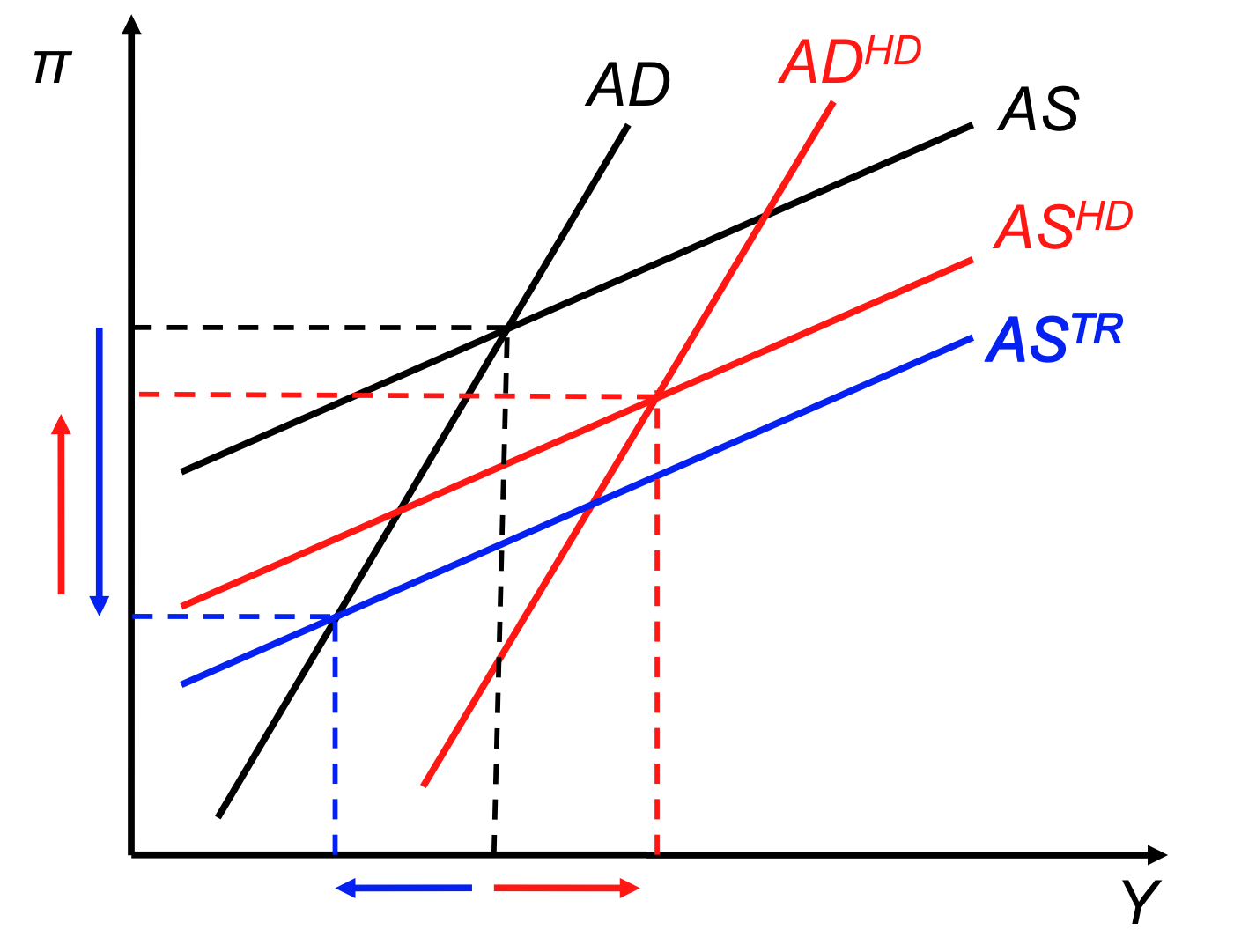Thanks for your interest in my work! Currently, my KC Fed webpage is the best place to find my current research. The remainder of this page contains work that does not appear on that page.
Real Fluctuations at the Zero Lower Bound
Aggregate
demand becomes upward sloping when the economy is stuck
at the zero lower bound. Thus, the economy may
respond very
differently to real shocks. A positive technology
shock which
shifts aggregate supply downward can cause a large
contraction in
output. However, these differential responses to
shocks emerge
when the central bank follows a standard Taylor rule (TR)
subject to
the zero lower bound. This rule implies that the
central
bank stops responding to the state of the economy at the
zero lower
bound. This assumption is inconsistent with the
recent behavior
by
monetary policymakers. The responses to shocks may
not
be so different if the
central bank follows a history-dependent
(HD) rule, which continues to respond the economy using
expectations
about future policy.

Discussion of Monetary Policy Slope & the Stock Market
By Andreas Neuhierl and Michael Weber
Midwest Finance Association Annual Meeting, March 2018
Discussion of Learning in the Oil Futures Market: Evidence & Macroeconomic Implications
By Sylvain Leduc, Kevin Moran, and Robert Vigfusson
Federal Reserve System Energy Conference, September 2017
Discussion of Oil Volatility Risk
By Lin Gao, Steffen Hitzemann, Ivan Shaliastovich, & Lai Xu
American Finance Association Meeting, January 2017
Discussion of Global Dynamics at the Zero Lower Bound
By William T. Gavin, Benjamin D. Keen, Alexander Richter, & Nathaniel Throckmorton
Federal Reserve System Macroeconomics Meeting, April 2014